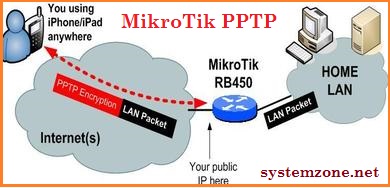VPN Logging And Auditing Best Practices For MikroTik Routers
If you're looking for a way to connect to your MikroTik router securely from a remote location, then you're in luck. With the VPN functionality of MikroTik routers, you can set up a secure, private connection from anywhere in the world to your home or office network. In this post, we'll walk you through the process of configuring a MikroTik router for VPN, specifically using PPTP (Point-to-Point Tunneling Protocol).

What is PPTP?
PPTP is a protocol used to tunnel Point-to-Point Protocol (PPP) traffic over an IP network. It is commonly used for VPN connections because it is easy to set up and use, and is supported by a wide range of operating systems and devices. PPTP is not the most secure VPN protocol, but it is still widely used because of its ease of use and versatility.
Step-by-Step Guide to Configuring MikroTik VPN with PPTP
Now that we've got an understanding of what PPTP is, it's time to dive into the specifics of setting up a PPTP VPN connection on a MikroTik router. Here's a step-by-step guide to get you started:
- Log in to your MikroTik router using your web browser.
- Click on the "PPP" tab.
- Click on the "Profiles" menu.
- Click on the "Add New" button to add a new profile.
- Type in a name for your profile (e.g. "PPTP VPN").
- Make sure that the "Change TCP MSS" option is checked.
- Select "pptp" as the protocol.
- Add the IP address of the VPN server you want to connect to.
- Add your username and password for the VPN server.
- Click on the "Secrets" tab.
- Click on the "Add New" button to add a new secret.
- Type in your username and password for the VPN connection.
- Select the profile you just created from the "Profile" dropdown menu.
- Click "OK" to save your settings.
- Reboot your MikroTik router.
Testing your VPN Connection
Once you've followed the steps above to configure your PPTP VPN connection on your MikroTik router, it's time to test your connection to make sure everything is working properly. Here's how:
- Connect to the internet from a remote location.
- Open your VPN client and connect to the VPN server using the username and password you set up in the MikroTik router.
- Once connected, try accessing a device on your home or office network (e.g. a network drive, printer, or other device). If you're able to access these devices, then your VPN connection is working properly.
Conclusion
Configuring a MikroTik router for VPN using PPTP is a relatively easy process that can be done by anyone with basic computer skills. By following the steps outlined in this post, you can set up a secure, private connection to your home or office network from anywhere in the world. So if you're looking for a way to stay connected to your network while on the go, give PPTP VPN a try on your MikroTik router.




Post a Comment for "VPN Logging And Auditing Best Practices For MikroTik Routers"